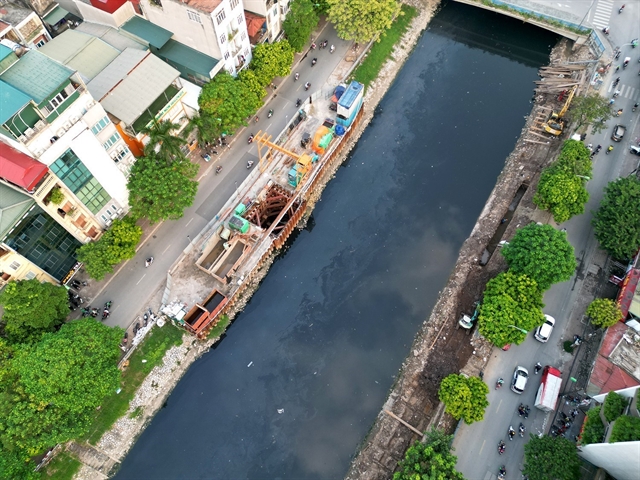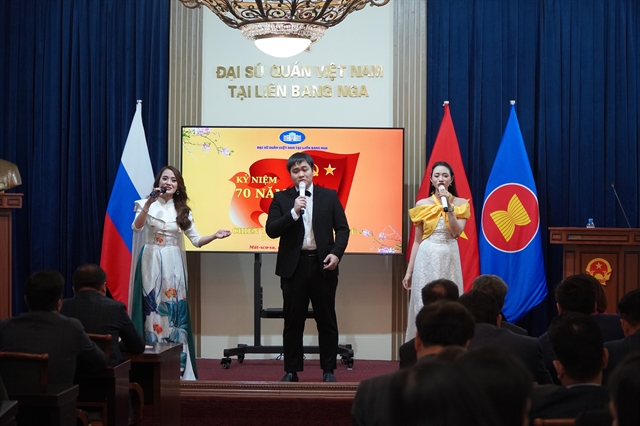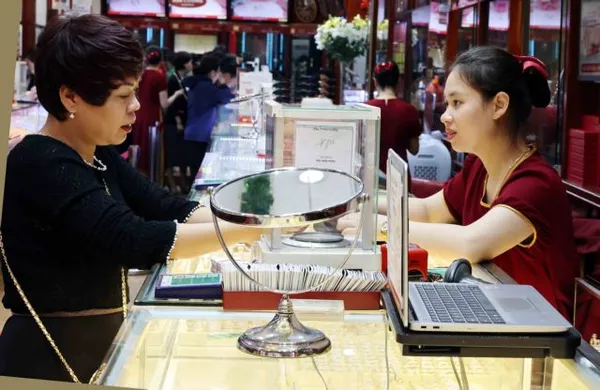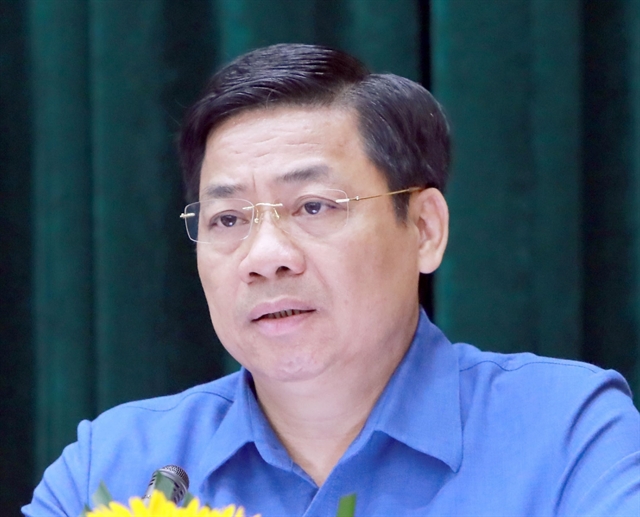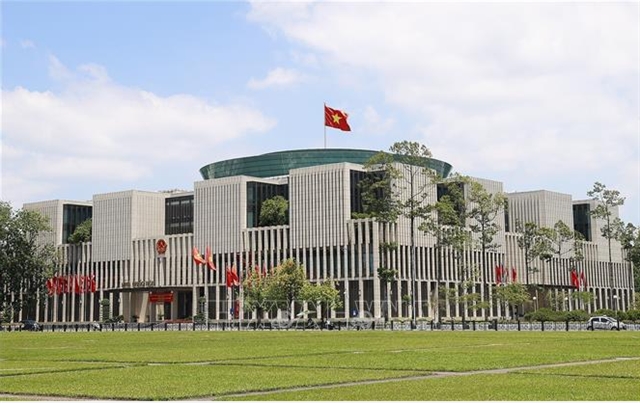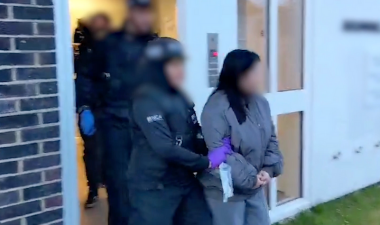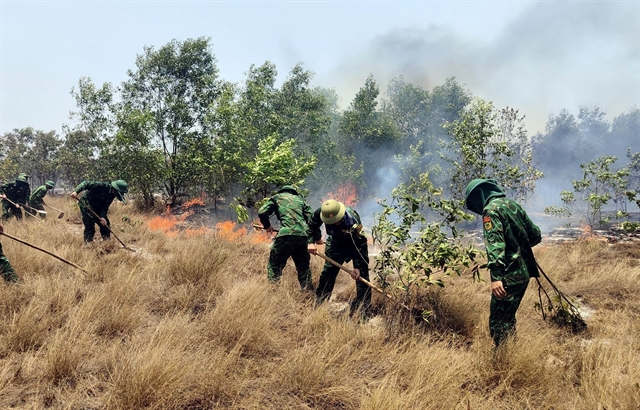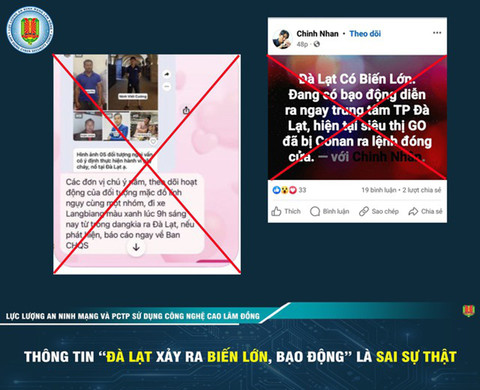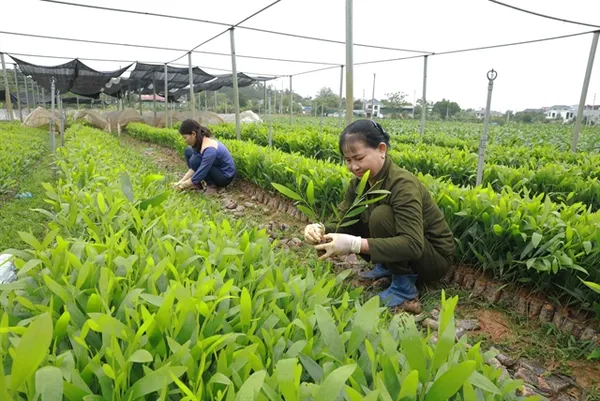 Society
Society
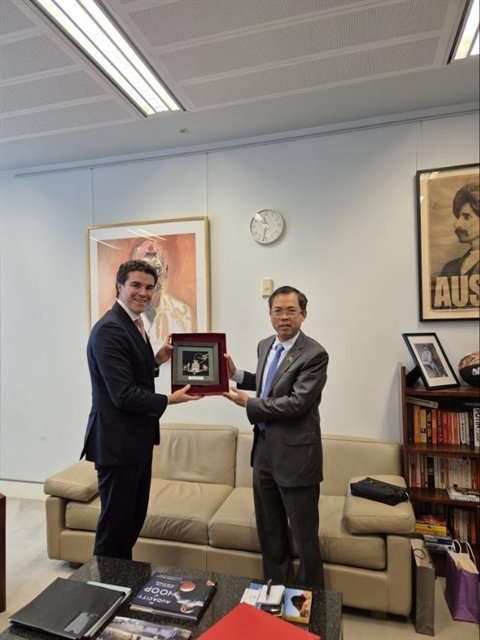
.jpg)
|
| This giant poster of President Hồ Chí Minh currently displayed at the Tràng Tiền – Đinh Tiên Hoàng intersection was created by painter Trần Từ Thành in 1976. |
By Minh Thu
A giant poster of President Hồ Chí Minh currently on display at the Tràng Tiền – Đinh Tiên Hoàng intersection was the result of a project launched in 1975.
Created by painter Trần Từ Thành, 75, former vice rector of the Hà Nội University of Applied Fine Arts, it’s one of the most popular posters of President Hồ.
The original version of the poster and the stories that go with it are on display at an exhibition titled Portrait of President Hồ Chí Minh – A View from Posters.
The exhibition has opened at the Hồ Chí Minh Museum, Hà Nội to celebrate the President’s birthday (May 19).
Thành said the then Ministry of Culture and Information (now Ministry of Culture, Sports and Tourism) and the Việt Nam Fine Arts Association launched a campaign to create paintings and statues to celebrate peace and reunification for the first National Fine Arts Exhibition which would be held in 1976.
Thành thought it was an opportunity for him to express a longing desire – painting President Hồ.
“One night, I heard a poem praising President Hồ, and the composition of the whole painting appeared in my mind,” he said.
“President Hồ was a great but simple leader. I thought I would draw a simple painting but make it stand out and show his desire for independence, peace and happiness for the nation.”
The painting was completed in 1976. It was awarded second prize at the first National Fine Arts Exhibition. Then Thành added the slogan “Independence, Unification, Peace and Happiness” before printing and publishing it across the country.
In 1981, Hà Nội enlarged the poster and put it on display in the centre of the city. Copies of the work are also displayed at museums in Cuba and Russia.
.jpg)
|
| A poster jointly created by Huy Oánh and Nguyễn Thụ was displayed on the walls of cities, villages and the Trường Sơn mountain range during the war. Another version of it was also displayed at the British Museum. |
Political posters are a form of graphic art containing two parts: drawings and slogans.
“The formation of political painting art was closely associated with the struggle for national liberation, and thrived during the two resistance wars to the present day,” said Vũ Mạnh Hà, director of the Hồ Chí Minh Museum.
“They have become a sharp weapon on the ideological front, serving the struggle for national independence and establishment of the country.”
Hà told Việt Nam News that most of the posters exhibited were original artworks created by famous painters. Their works were popular among many generations of Vietnamese people.
“With rich graphic styles and condensed writing, the collection of posters portray President Hồ as a hero of the nation and a great man of culture,” he said.
“His life became an endless inspiration for both ordinary people and artists.”
Another highlight of the exhibition is a poster jointly created by Huy Oánh and Nguyễn Thụ. Oánh based on a photo taken in 1954 after the Điện Biên Phủ Victory. Thụ painted the background with a group of soldiers marching across the mountain.
During the American War, copies of the poster were displayed on the walls of buildings in cities, villages and even the Trường Sơn mountain range.
At the British Museum, one version of the work was displayed at the Asian Posters: The Art of Influence exhibition held in 2013.
The current exhibition at the Hồ Chí Minh Museum displays 60 posters that were created and published after President Hồ's death (1969).
The exhibits are divided into four parts with respective themes: Hồ Chí Minh – The Soul of Việt Nam; Hồ Chí Minh – a Talented Militant and Poet; Uncle Hồ – A Great Love; and President Hồ Chí Minh Lives Forever in National Construction and Defence.
Visitors will have a chance to understand President Hồ through the posters in which he called on people to exercise in the morning to improve their health, plant trees and embrace the revolutionary spirit.
On the occasion, a publication titled Hồ Chí Minh’s Portrait – A View from Political Posters, was released with posters and essays written by art researchers and painters.
The publication aims to help visitors learn more about the artistic style and historical and cultural values of Vietnamese patriotic posters.
The exhibition will run until October 10. Visitors will also have a chance to create their own posters. — VNS


